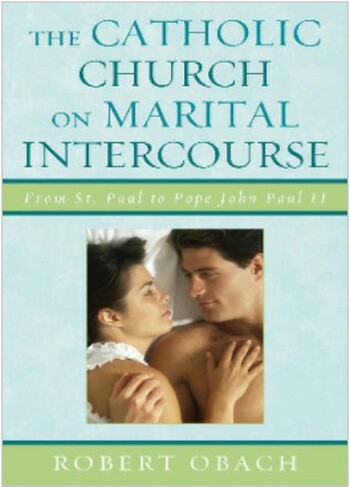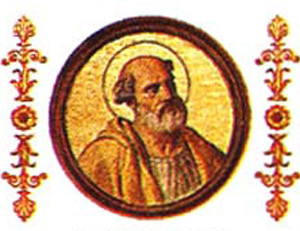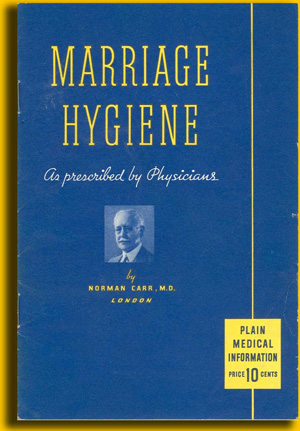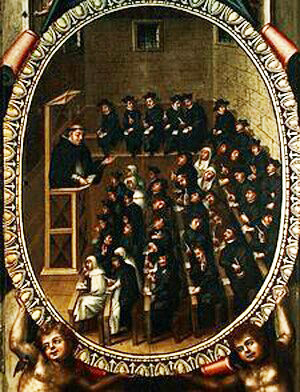Catholic Virtues
 |
 |
 |
 |
 |
 |
 |
The Single Vocation - VIII - Objections
‘The Marital Act Has Nothing Impure in It’
This will be my fourth article answering objections to our position in the virginity-marriage discussion. In order to exalt the marital act apropos of virginity, we received the following objection, which I am presenting in a logical order.
Sixth objection:
1. Natural marriage was elevated by the Church to a Sacrament, which means that to the mandate of populating the earth was added that of populating Heaven to fill the empty places of the fallen angels;
2. Now then, the only way to fulfill these two mandates is through the multiplication of children in a Catholic marriage;
3. Therefore, the marital act is essentially pure as long it takes place according to the laws of honesty dictated by the Church.
Answer to the sixth objection:
1. There are three presuppositions that I need to establish before answering this objection:
3. I say that the marital act is turpid for three reasons: Because it is through it that original sin is transmitted; it is performed by the more shameful visible organs of the body and it raises a sentiment of dishonor.
4. Original sin is transmitted through the marital act
8. Further, no one, unless he is a degenerate and scandalous person, thinks about carrying out the marital act in public.
9. Nonetheless, it is an honest act entirely justified for the goals it was established: the preservation of mankind; a remedy for concupiscence; the support of the spouses, as well as a means to bring more souls to Heaven. All these ends are commendable.
10. Since the doctrine of the Church exposed here is so simple and has been always taught in this way by the Saints and the Magisterium, I wonder what doctrines are influencing those who opened an attack against TIA’s expositions on virginity and marriage. It could be that they are exalting the marital act influenced by progressivist doctrines that imagine the Trinity as an eternal marital act and try to explain all of religion – grace, sacraments, progress in spiritual life – based on sexual relations (1).
Continued

Sixth objection:
1. Natural marriage was elevated by the Church to a Sacrament, which means that to the mandate of populating the earth was added that of populating Heaven to fill the empty places of the fallen angels;
2. Now then, the only way to fulfill these two mandates is through the multiplication of children in a Catholic marriage;
3. Therefore, the marital act is essentially pure as long it takes place according to the laws of honesty dictated by the Church.
Answer to the sixth objection:
1. There are three presuppositions that I need to establish before answering this objection:
- Since the Church blesses marriage and considers the marital act licit, if anyone says that there are impurities in that act, he sets himself against this Church judgment, because, morally speaking, nothing that is impure can be licit. Taking advantage of this specific meaning given to the word impurity, those who sent TIA this objection had their slingshots pointed at me, waiting for me to affirm that there are impurities in marriage so that they can shoot their pellets: “You are against the Church.”
Therefore, even if in colloquial language one can say that there are impurities in the marital act, in specific moral terminology I have refrained from using impurities and call them turpitudes, a word used in Morals to describe moral flaws in marriage. I take this precaution to not fall into the trap my opponents have prepared. I smile when I write these lines, because the word turpitude is in fact much stronger than the term impurity they want to avoid. - Vatican II inverted the goals of marriage replacing procreation, which was always its first aim, with love between the spouses. Adding to this, John Paul II bombarded the Church for 26 years with his Personalism, stating that sin is nothing more than egoism. Applying this definition to marriage, sin takes place when one of the spouses uses the other as “an object for his own pleasure.” When he strives to please the other, then his action is good; he is pleasing God.
Influenced by these two factors, post-conciliar Moral Theology became extremely lax, allowing the spouses to do almost everything – even anti-natural practices that had been strongly forbidden before – insofar as it aims to bring love/happiness/pleasure to the other. The priests who have been formed since John XXIII in the Conciliar Church – including those who became traditionalists – have received these permissive moral guidelines as norms, and they are passing them on to the laypeople they direct. Consequently, many spouses have been advised to practice these moral turpitudes, which they consider included in the licit character of the marital act.
Post-conciliar teachings on marriage accuse Catholic Morals of being Stoic, & promote sexual abuses in the marital act - read this book advertisement here
Sadly, even before Vatican II, the Church had been infiltrated by Progressivism and was prepared to receive those novelties. Indeed, since the time of Pius XI, we can find in manuals of Moral Theology the first signs of tolerance toward these turpitudes being taught at the seminaries. Today, these turpitudes have spread everywhere and are included in the permission the Church gives to spouses to perform the marital act. - Given that when I say that there are turpitudes in marriage, I am being accused of going against the Church, I would like to ask: Against what Church, the immortal Catholic Church or this immoral Conciliar Church? It is not clear to me what these accusers consider licit in the marital act. This is something that they should examine according to their conscience and answer to God.
- Having established these three presuppositions I will answer the objection.
3. I say that the marital act is turpid for three reasons: Because it is through it that original sin is transmitted; it is performed by the more shameful visible organs of the body and it raises a sentiment of dishonor.
4. Original sin is transmitted through the marital act
- With the Church I affirm that it is through the sexual act – even the honest marital act within marriage – that original sin is transmitted. Indeed, in the conception of a child, two simultaneous realities take place: the creation of the body by the parents and the creation of the soul by God. Now then, the soul is created pure by God. So, the inheritance of original sin received by each man is transmitted by the parents through the marital act. Therefore, the marital act is turpid insofar as it transmits original sin.
- Confirmation of this conclusion is found in the Letter Bonum atque iucundum of Pope Anastasius II, when combating heretics who imagined that the souls of men were transmitted by their parents and not created by God and that original sin would pass to their souls through their parents. The Pope affirmed: “How is it that some heretics think, against divine teaching and with too carnal an intelligence, that the soul – made to the image of God – is transmitted by the [sexual] human union, given that the action made by Him from the beginning [creation of the soul] continues to this day, as Christ himself said? … Therefore, you must keep the holy doctrine that it is He Who infuses the souls. …
“You must distinguish, with this wise separation, that the parents cannot transmit anything but that which they committed through their own misdirected presumption, that is, the penalty and guilt of sin, which they pass to their offspring by transmission, and it is for this reason that men are born vicious and with defects. It is clear that God has no part in this evil because, in order to avoid this calamity, He forbade them to commit the sin, threatening them with the innate fear of death. Thus, what the parents bequeathed them [the children] appears through transmission, and it is also manifest that what God has done from the beginning to the end, He continues to do [that is, to infuse the souls]” (DR 170).
Pope Anastasius II: Original sin is transmitted by the parents to the newborn child
- The Council of Trent, while dealing with another topic, confirms that the infection of original sin is transmitted in the act of conception: “But, although it is true that ‘Christ died for all’ (2 Cor 5:15), yet not all receive the benefit of His death, but only those to whom the merit of His Passion is communicated. For, as men would not have been born unjust if they were not propagated from the seed of Adam – for it is through him and as a consequence of this propagation that they contract injustice as their own in conception – so also, unless they be born again in Christ, they would never be justified” (Decree on Justification, c. 3, canons 2, 10, DR 795).
- Card. Matteo d’Acquasparta, O.F.M., a medieval disciple of St. Bonaventure, is very explicit about how original sin infected the marital act. I am following an explanation of his work in the famous Dictionnaire de Théologie Catholique (DTC):
“The immediate cause of the transmission of [original] sin would be natural generation … (Quaestionis Disputate Selectae, vol 2, Ed. Quaracchi, 1914, q. 3, p. 50). To explain the transmission of sin, he observes that the flesh infected by concupiscence triggers a cogent filth when it enters into contact with the soul: ‘It is necessary to establish that the contamination and corruption of the flesh in some way inundates the soul’ (q. 3. p. 51)” (A. Glaudel, entry Peché Originel, Dictionnaire de Théologie Catholique, col. 464).
Card. d'Acquasparta: It is through the seminal transmission that original sin infects the soul
A little further, the DTC concludes on the thinking of d’Acquasparta: “Given that Adam lost the goods of nature that had been entrusted by God to him and his descendents that would come by the propagation of the species, caused by the proportion that exists between the body and the soul, and the repercussions of the defects of the soul on the body … then, this culpable fault of Adam’s soul falls over the human race by means of the seminal transmission tainted by concupiscence. Even though the generator semen is not actually the seat of the fault, it disposes the soul, by its contact, to receive it” (ibid., col. 494).
E. I say, therefore, that the marital act, even when the spouses are sanctified by a Catholic marriage, is turpid insofar as it is the transmitter of original sin.
- In the answer to the Fifth Objection, I quoted texts of St. Thomas showing that there are shameful connotations in the marital act that bear the punishment of original sin. Here, I will develop this idea further.
- In the human body the organs that are the most shameful are those that are used to discharge the filth produced by the body; they are the penis, the vagina and the anus. The last is more shameful than the first two because it discharges solid detritus, while the others discharge liquid detritus, but these organs also are disgusting and shameful. Now then, the male and female sexual functions are put into practice by these shameful organs. Therefore, it is undeniable that they share something of the same disgusting character of their other function.
- Even though the function of reproduction is much nobler than the function of eliminating the impurities of the body, there is a universally accepted association of those functions and, consequently, a natural psychological repulsion to view these organs.
- The repugnance for the exposition of these organs – either when they are in action or not – is universal among civilized people. Even among primitive and pagan people these organs are normally covered by clothing. To reach the point of boldly exhibiting these organs in public, a person or a group needs to have reached a great degree of moral degradation by losing any reserve of pudor or shame.
- The fact that the sexual organs trigger the process of concupiscence and as such become greatly attractive – either in marriage or outside of it – does not nullify the normal repulsion they raise. So then, reactions of both shame and attraction are present regarding these organs.
- As it is known, regarding sexual activity outside of marriage, the Church has two Commandments – 6th and 9th – that oblige Catholics not to engage in it, either in thought or deed. Regarding the licit sexual activity inside marriage, there are also precise rules to control concupiscence and avoid lust.
- Reinforcing this general moral, psychological and hygienic reserve regarding the sexual organs, the Church has always recommended modesty in dress, prohibiting even the remote exhibition of these organs, which she wisely calls pudenda pars (shameful parts). Morally speaking, the pudenda pars include the three mentioned organs plus the female breasts, whose exposition also ignite concupiscence in men and induce them to lust.
- Therefore, we see that the sexual organs are tainted with the shame proper to the function of eliminating human waste, which is another function they have parallel to that of procreation. Consequently, the marital act shares an analogous repulsion.

The reproductive organs are among the filthiest of the human body
- Confirming the general sentiment of shame regarding the sexual act – either inside or outside of marriage – here, I offer the reader an in-depth explanation of the first instinctive reactions of dishonor and indignity that man has to the marital act, which invite him to refrain from it and, collaterally, oblige it to take place in the secrecy of the private life.
- In his introduction to the Question on Shame by St. Thomas, Fr. Candido Aniz, O.P., professor at the University of Salamanca, comments on the first reactions of shame any man has to the marital act: “Every man feels two movements regarding carnal pleasure, the act that leads to generation: The first is indisputably a movement of acceptance, of desire, which seeks satisfaction and enjoyment. The second is a movement of defense, of delicacy, of restraint, through which he becomes aware that the realization of these acts or even the simple desire for them produces a feeling close to dishonor. Nature impels man to enjoyment, but nature also makes him feel with a spontaneous blow that this is not the most dignified act of the human being, something that should not be done before our fellow men. ...
“Nature itself fears a certain dishonor and disgust due to the fact that those acts have in themselves something shameful and blushful, improper, of mere matter without the spirit. We will never know from where this reservation is born, this care to conceal the carnal acts unless we consider them as a living and spontaneous expression of the innate instincts of human nature. The fear, the running away from dishonor in which these acts seem to be dragged are an inheritance of all mankind. … We do not know in what moment we acquired it, but the first time that a man finds himself before the specter of the appetite of venereal pleasure, the sweet figures of pudor, shame and self-esteem appear as a chaste reservation, as a fearful and anxious innocence that fears being violated.
“This passion, this movement that makes us fear dishonor, acquires a double tonus: before all else there is a cautiousness warning us unremittingly not to be overtaken by the adulation of pleasure and to not act against the order of nature. But, secondarily, it also invites us, acting thus in conformity with the laws of nature, to keep these acts hidden and in the secrecy of the private life. The simple fact of performing them before the eyes of others necessarily causes the passion of shame, a momentary agitation, followed by a profoundly human sentiment. ...
“We must affirm now that the shame born from the fear of dishonor, from the indignity of the corruption of matter, is especially remarkable because of the shameful and blushful character of the act upon which it bases itself. It is quite just that, as a source of dishonor and shame, first place should be given to the sexual matter” (Candido Aniz, Introdución a la Cuestión 144 sobre la Verguenza de la Suma Teologica II, II, Madrid: BAC, 1955, vol. X, pp. 60-61).
Beauty without pudor is a flower cut from its stem
- Therefore, human nature has an instinctive reaction of shame in the face of the marital act, viewing it as a source of dishonor.

The professors of the University of Salamanca are prestigious commentators of St. Thomas
8. Further, no one, unless he is a degenerate and scandalous person, thinks about carrying out the marital act in public.
9. Nonetheless, it is an honest act entirely justified for the goals it was established: the preservation of mankind; a remedy for concupiscence; the support of the spouses, as well as a means to bring more souls to Heaven. All these ends are commendable.
10. Since the doctrine of the Church exposed here is so simple and has been always taught in this way by the Saints and the Magisterium, I wonder what doctrines are influencing those who opened an attack against TIA’s expositions on virginity and marriage. It could be that they are exalting the marital act influenced by progressivist doctrines that imagine the Trinity as an eternal marital act and try to explain all of religion – grace, sacraments, progress in spiritual life – based on sexual relations (1).
- For example, on the relations of Christ and the Church taking the sexual act as a pattern, see the progressivist doctrine presented in my Animus Injuriandi I (Los Angeles: TIA, 2010), pp. 153-156; on the Eucharist explained from a sexual perspective, see Will He Find Faith? (Los Angeles: TIA, 2007), pp. 286-292, 297-301; on the Trinitarian nuptial relationship between the Father and the Son and the eternal nuptial relationship between Christ and the Church, see Fumus Satanae (Los Angeles: TIA, 2015), pp. 191-209.

Posted April 6, 2018














